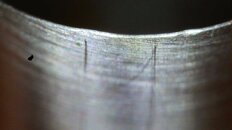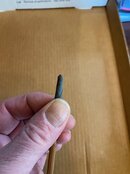Sounds like your making good progress and I hope having some fun. In regards to the HP seat getting stuck in the retainer, I've used the freezer trick with mixed results and of course it takes a little time. If you come across another "sticky" one, try this...
I use to use the threaded bar in a vise to hold the first stage while removing the HP seat retainer but after the multi tool slipped on me a couple of times (with the results you'd expect), I came up with an alternative method. Before removing any hoses, place the first stage on the tank valve with the retainer facing up (DO NOT PRESSURIZE). Utilize the multitool to remove the retainer by getting right over it while applying a downward force. Carefully apply a counter clockwise rotational force on the multitool while ensuring it stays square and flat. Once removed (if you intend to remove the HP seat), flip the retainer over and place it in the recess. Place a 3/4" deep socket over the exposed seat. Push down on the socket and give it a quick burst of air. Under normal circumstances it should pop right out. (The socket contains the HP seat and prevents you from "shooting your eye out"

). If you come across a stubborn one, you can place a suitable size o-ring under the retainer and clamp the socket down to the first stage with a wood clamp or other suitable tool. Give it another burst of air & presto. I had one where the freezer trick did not work and after several attempts without success, I came up with this procedure and it worked nicely. Anyway, just a thought.
I totally agree about using a new seat (if available). If you do intend or attempt to reuse the seat, don't remove it from the retainer. If you must remove it for cleaning inspection etc. make sure you index the location of the seat by marking the rim of the retainer and the seat with a sharpie (permanent marker). This may help ensure the geometry of the knife edge set remains in the same location when you reinstall it.
Also regarding the HP seats, I find the gray ones marked on the bottom with either an X (tall), -I (taller) or -II (tallest) tend to be the most forgiving regarding a consistent lock up. (I've tried the Trident A242's and the older Scubapro (white, pink, red, blue seats) but personally have experienced mixed results. They seem to be better suited to the MK5. I'm sure you know this, but for those who may not, the taller seat's will result in a corresponding reduction in IP due to the reduced piston travel necessary to overcome the spring force and establish a seat (lock up). The benefit being you can adjust the IP without a complete disassembly that's necessary to install or remove shims.
Looking forward to seeing the tool you mentioned above. I've had a few ideas myself.
scubaboard.com






